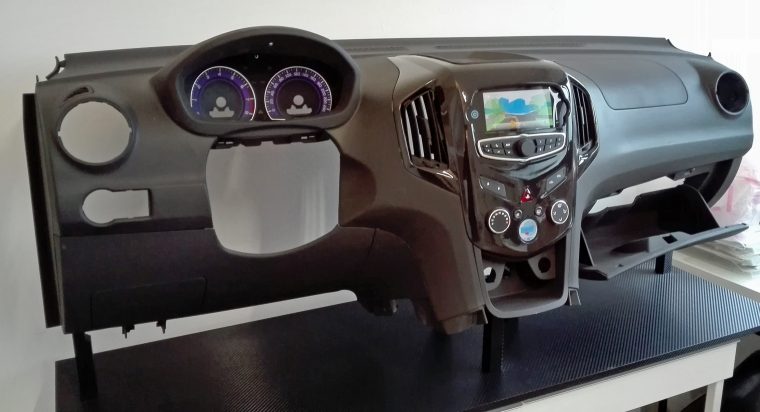Skorpion Engineering, a luxury automotive service bureau, is now producing complex automotive prototypes and components up to 1.5 times faster than by traditional means using 3D printing
The service bureau uses Stratasys FDM and PolyJet 3D printers to 3D print exterior and interior prototypes from metal and multi-materials within 24 hours of a customer request.
Away from clay
Traditionally, automotive prototype parts and even entire vehicles are modelled to scale using a plasticine-like clay material. The benefits of clay include its malleability, and accessibility to a number of modellers at any one time.
However, clay modelling is time consuming, and the models are both heavy and occasionally inaccurate. Most importantly, lack of automation also makes job completion slower, as staff are unable to process other jobs whilst modelling.
Skorpion Engineering, which has centres in the Northern Italian cities of Milan and Turin, is addressing this by CAD designing and 3D printing detailed prototypes for complex automotive parts with its 3D printers.

Automotive prototypes and parts on demand
One example of this being especially effective is the use of the Stratasys Fortus 900mc Production FDM 3D Printer to 3D print a car bumper 1.5 times faster than if it had been sculpted using clay.
Skorpion has seen significant benefits from the change. Italo Moriggi, Skorpion Engineering’s director noted that the move from clay models to performance prototypes and parts in short deadlines produced a surge in business due to supply chain efficiency, optimized production time and accelerated time-to-market.
In the context of the end-to-end manufacturing workflow, the level of time-saving enjoyed with 3D printing isn’t merely improvement or progression, it’s transformational,” Moriggi said. “In fact, with 3D printing we can send prototypes to our customers the very next day.”
Many of the prototypes in question produced using FDM are both lighter than their clay equivalents, and have part aerodynamics with characteristics almost as advanced as final components. According to Moriggi, this “allows our customers to undergo aesthetic and functionality verification significantly faster,” and accelerates time to market on the parts.

Customised automotive prototypes
Using the Objet350 Connex3 PolyJet 3D Printer, Skorpion was able to simultaneously combine varying textures of rigid and soft material and produce a prototype vehicle dashboard. According to Moriggi, combining the materials allows Skorpion to overcome “engineering challenges early in the design phase,” and subsequently speed up delivery 1.5 times.
While many other automotive companies, such as Phoenix, Arizona’s Local Motors have used 3D printing for prototyping, Moriggi stated that Skorpion’s goal, having already 3D printed full size models of concept cars, is eventually “to utilize additive manufacturing to realize the production of a fully-functional concept car within the next five years.”
For more information on 3D printing in the automotive sector, subscribe to our free 3D Printing Industry newsletter, follow us on Twitter, and like us on Facebook.
Featured image shows a car bumper 3D printed with Stratasys Fortus 900mc. FDM 3D printer. Photo via Stratasys.

